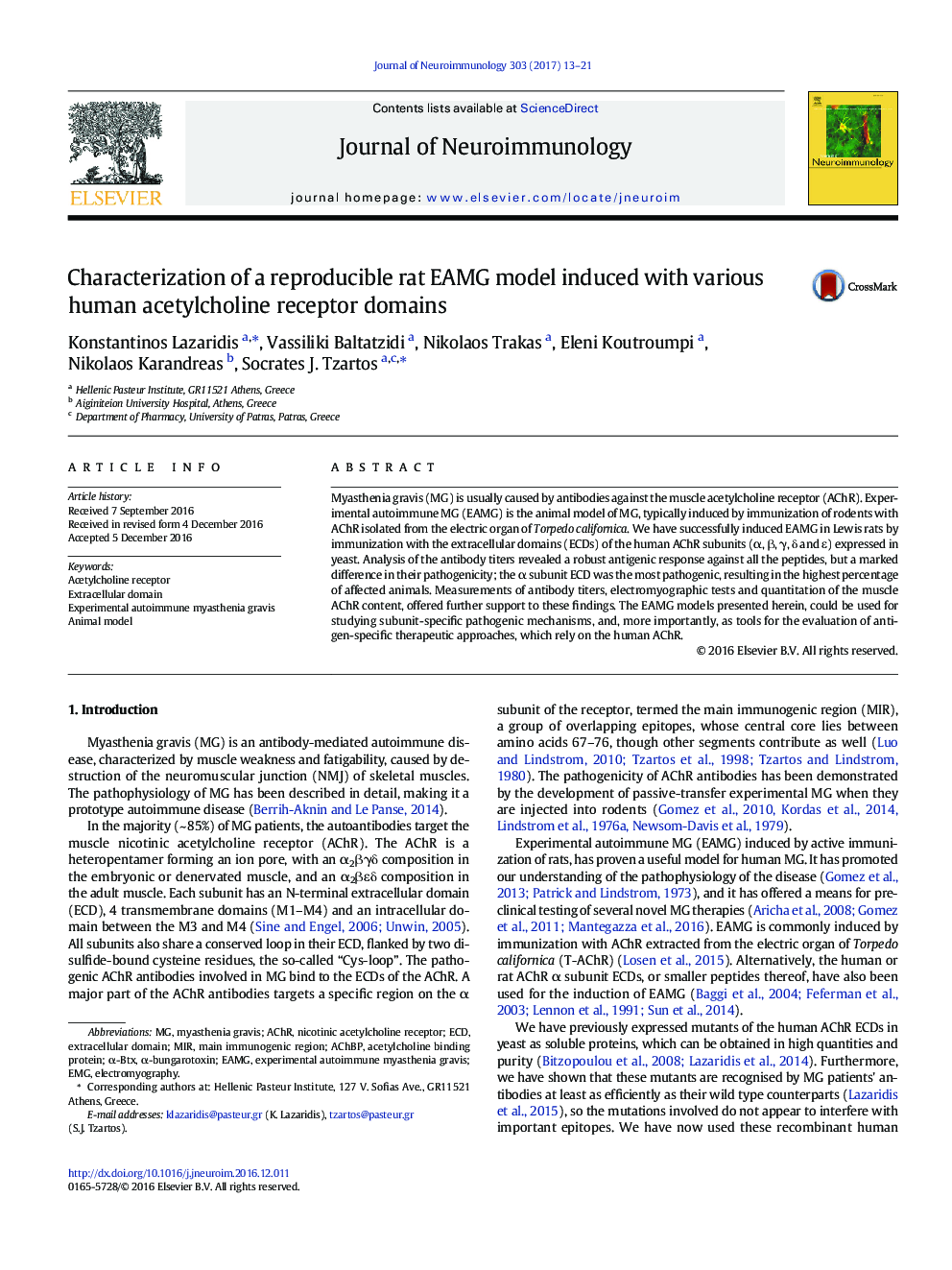| Article ID | Journal | Published Year | Pages | File Type |
|---|---|---|---|---|
| 5630251 | Journal of Neuroimmunology | 2017 | 9 Pages |
â¢We successfully induced experimental MG in rats with domains of each of the h-AChR subunits.â¢This is the first demonstration of EAMG with the non-α human AChR subunits.â¢The α subunit ECD was more pathogenic than the non-α subunits.â¢Immunization with a combination of subunits was more pathogenic than each one individually.
Myasthenia gravis (MG) is usually caused by antibodies against the muscle acetylcholine receptor (AChR). Experimental autoimmune MG (EAMG) is the animal model of MG, typically induced by immunization of rodents with AChR isolated from the electric organ of Torpedo californica. We have successfully induced EAMG in Lewis rats by immunization with the extracellular domains (ECDs) of the human AChR subunits (α, β, γ, δ and ε) expressed in yeast. Analysis of the antibody titers revealed a robust antigenic response against all the peptides, but a marked difference in their pathogenicity; the α subunit ECD was the most pathogenic, resulting in the highest percentage of affected animals. Measurements of antibody titers, electromyographic tests and quantitation of the muscle AChR content, offered further support to these findings. The EAMG models presented herein, could be used for studying subunit-specific pathogenic mechanisms, and, more importantly, as tools for the evaluation of antigen-specific therapeutic approaches, which rely on the human AChR.
Graphical abstractDownload high-res image (71KB)Download full-size image
